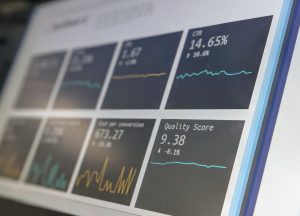Forex, short for foreign exchange, is the largest financial market in the world. It is where currencies are traded 24/7, with a daily average turnover of $5.3 trillion. Forex trading offers an opportunity to profit from the fluctuations in currency prices. However, it is a complex market that requires a good understanding of the terminology and concepts involved. One such concept is PMA.
PMA stands for Price Moving Average. It is a commonly used technical indicator in Forex trading that helps traders identify the trend of a currency pair. A moving average is a calculation of the average price of a currency pair over a specified period of time. The PMA is simply a moving average that is plotted on a price chart.
There are three types of moving averages: simple, exponential, and weighted. The simple moving average (SMA) is the basic calculation of the average price over a certain period of time. The exponential moving average (EMA) is a more complex calculation that gives more weight to recent prices. The weighted moving average (WMA) is a calculation that gives more weight to the most recent prices, but also takes into account the entire price history.
Traders use moving averages to identify the direction of a trend. If the price is above the moving average, it is considered an uptrend, and if it is below the moving average, it is considered a downtrend. The PMA can also help traders identify support and resistance levels. Support is a price level where buying pressure is strong enough to prevent further price declines, while resistance is a price level where selling pressure is strong enough to prevent further price increases.
The PMA can be used in a variety of ways. Some traders use it as a standalone indicator, while others use it in combination with other technical indicators. For example, the PMA can be used with the Relative Strength Index (RSI) to identify overbought and oversold conditions. When the price is above the PMA and the RSI is above 70, it is considered overbought, and when the price is below the PMA and the RSI is below 30, it is considered oversold.
Traders can also use multiple PMAs to identify different trends. For example, a short-term PMA (such as a 20-day SMA) and a long-term PMA (such as a 200-day SMA) can be used to identify both short-term and long-term trends. If the short-term PMA is above the long-term PMA, it is considered a bullish signal, and if the short-term PMA is below the long-term PMA, it is considered a bearish signal.
It is important to note that the PMA is not a perfect indicator. It can lag behind the price action, and it can also give false signals. Traders should always use the PMA in combination with other technical indicators and fundamental analysis to make informed trading decisions.
In conclusion, the PMA is a commonly used technical indicator in Forex trading that helps traders identify the trend of a currency pair. It is a moving average that is plotted on a price chart and can be used in a variety of ways to identify support and resistance levels, overbought and oversold conditions, and short-term and long-term trends. However, traders should always use the PMA in combination with other technical indicators and fundamental analysis to make informed trading decisions.





